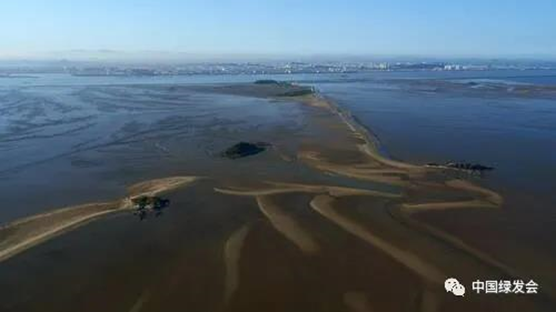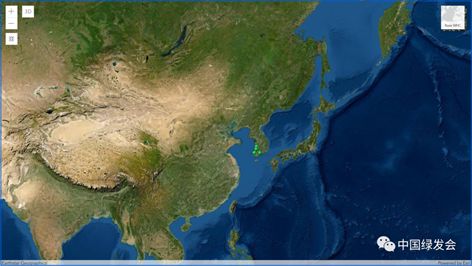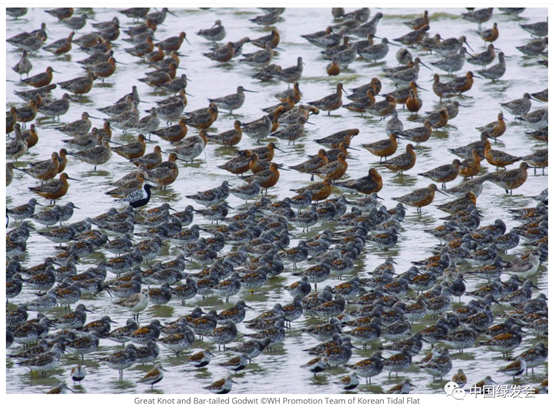The tortuous process of South Korea’s Getbol tidal flat wetland application for World Heritage, finally succeeded at the 44th World Heritage Conference.
On July 26, 2021, the Korean Tidal Flat was successfully registered at the 44th World Heritage Convention. A series of tidal flats inhabited in Korea, including endangered species, were successfully included in the World Natural Heritage List. This marks a historic step towards ensuring that millions of migratory waterbirds are key habitats in the Yellow Sea. When these migratory waterbirds migrate from remote Australia and New Zealand to their breeding grounds in the Russian Arctic and Alaska, the Yellow Sea region is theirs. An important stopover.

Yubudo Island, Seocheon Getbol, ? World Heritage Promotion Team of Korean Tidal Flat
Zhou Jinfeng, as the executive member of the IUCN Ocean Connectivity Expert Group, has always paid great attention to the connectivity protection of tidal flat wetlands and migratory bird migration routes. Prior to this, he successfully promoted the inclusion of the Tiaozi mudflat wetland in Dongtai, China as a World Natural Heritage Site.
Many people may think that deserted beaches are not good-looking, but they don’t know that they are "maternity houses" and paradise for marine life and migratory species—supporting rich biodiversity, which is what we humans rely on for survival and sustainability.
Prior to this, South Korea applied to the UNESCO (UNESCO) professional assessment agency for world natural heritage, the World Conservation Union (IUCN), which are the four beaches along the Yellow Sea in Suncheon, Seochon, Gochang, Sinan, and Boseong, in 2021. It was rejected in May 2015 and was recommended to "return and re-report". From the end of May to June 2021, at the invitation of relevant Korean agencies, the Secretary-General of CBCGDF Zhou Jinfeng signed an expert letter and submitted it to the President of South Korea, Mr. Moon Jae-in.
At the end of June 2021, Zhou Jinfeng once again signed a letter to the World Heritage Committee together with 52 heads of conservation agencies around the world. Bruno Obel, Director-General of the IUCN. This series of expert network support has strongly promoted the process of applying for the status of Getbol Tidal Flat Wetland.


A bird's-eye view of South Korea's Getbol tidal flat wetland. Map screenshot source/UNESCO official website map
The shallow areas of the Yellow Sea region span China, North Korea and South Korea. This area is home to the largest and most spectacular intertidal wetlands in the world. Although in the aesthetics of people who grew up in the age of industrial civilization, these places do not seem to be beautiful, and may be considered a bit "unattractive", but they are extremely important for healthy ecosystems-as habitats, they support extremely rich organisms. Diversity.
Among them, the most well-known is the largest migratory waterfowl flock in East Asia, many of which are threatened by habitat loss along the migration route. This migration route is also what we usually call the "East Asia-Australia Bird Migration Route" "(EAAF). During the migration period, as many as 100,000 waterbirds inhabit the mudflats around an island in Shuchuan, Getbol, including the extremely endangered Spoon-billed Sandpiper and the endangered Great Whimbrel. In addition, birds such as the vulnerable species black-headed gull and the endangered species black-faced spoonbill stay in the coastal wetlands of the Yellow Sea to build nests.

South Korea’s application for heritage is in line with the universal value (OUV) in the heritage declaration requirement-maintaining species diversity and playing an important role in incubating the world’s endangered species in the Yellow Sea section of the East Asia-Australia migration route, which is the world’s three major migratory bird migration routes. Core role.
South Korea’s application for World Natural Heritage is a series of applications, including South Korea’s Seochon, Chungcheongnam-do, Gochang, Jeollabuk-do, Sinan, Jeollanam-do, and Boseong?Suncheon, Jeollanam-do. There are a total of four tidal flat wetlands.

Beautiful autumn scenery in the Suncheonman Bay area. ? World Heritage Promotion Team of Korean Tidal Flat
According to Yonhap News Agency, among the four tidal flats, the area of the tidal flats in Sinan, Jeollanam-do is the largest, reaching 1,100 square kilometers, and the rest are about 60 square kilometers. All around are the country’s wetland reserves, some of which are internationally important wetlands.
South Korea's tidal flat wetland Getbol was included in the World Heritage List, marking a major shift in the paradigm of South Korean tidal flat wetland protection and management policies, as well as an increase in public awareness. The Getbol tidal flat is listed as a World Heritage Site, which means that the tidal flat wetland managed by local people will become a common global property left by all mankind to the next generation.
(Reference source: EAAFP official website, World Heritage Convention official website, China Green Hair Association report, Yonhap News Agency report)
Collected by Linda
Edit:angel
Review:SY
Translated by Luke Chen
Original Chinese website:https://mp.weixin.qq.com/s/EE24ayYgZE0KjFKRhC_xJA
Contribution
https://www.paypal.me/CBCGDFChina
http://www.cbcgdf.org/English/ConfirmDonaTion/0.html
